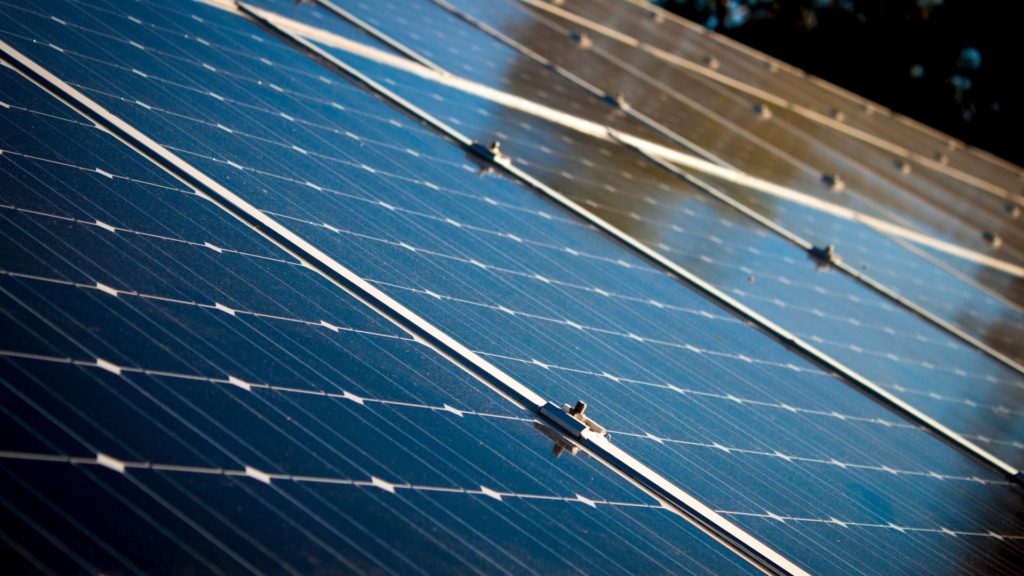In an era marked by growing environmental concerns and the urgent need to combat climate change, renewable energy production has emerged as a beacon of hope for a sustainable future.
Renewable energy production involves harnessing energy from naturally replenishing sources such as sunlight, wind, water, and geothermal heat. Unlike fossil fuels, which deplete finite resources and emit harmful greenhouse gases, renewable energy offers a clean and sustainable alternative. The global transition towards renewable energy production is driven by several factors such as
Environmental Imperatives
With the impacts of climate change becoming increasingly evident, there is a growing consensus on the need to reduce carbon emissions and transition to low-carbon energy sources. Renewable energy production offers a pathway to significantly reduce greenhouse gas emissions, mitigate climate change, and protect ecosystems and biodiversity.Economic Viability
Advancements in renewable energy technologies, coupled with declining costs, have made renewable energy production increasingly competitive with conventional fossil fuels. The falling costs of solar panels, wind turbines, and energy storage systems have unlocked new opportunities for large-scale renewable energy deployment, driving investment and job creation in the renewable energy sector.Energy Security
Renewable energy sources are inherently abundant and widely distributed, reducing dependence on imported fossil fuels and enhancing energy security. By diversifying the energy mix and promoting decentralized energy generation, renewable energy production contributes to greater resilience against supply disruptions and geopolitical risks.Renewable Energy Products
Renewable energy products encompass a wide range of technologies and applications tailored to meet diverse energy needs across sectors:Solar Power
Solar power, derived from sunlight through photovoltaic panels or concentrated solar power systems, is one of the fastest-growing renewable energy sources worldwide. Solar energy products include rooftop solar panels for residential and commercial use, as well as utility-scale solar farms that feed electricity into the grid.Wind Power
Wind power harnesses the kinetic energy of wind to generate electricity using wind turbines. Onshore and offshore wind farms produce renewable energy products that contribute to grid stability and supply electricity to communities and industries.Hydropower
Hydropower utilizes the energy of flowing water to generate electricity through hydroelectric dams and run-of-river installations. Hydropower products provide reliable baseload power and support grid stability, particularly in regions with abundant water resources.Biomass and Bioenergy
Biomass energy products involve the conversion of organic materials such as wood, agricultural residues, and organic waste into heat, electricity, and biofuels. Biomass power plants and biogas facilities produce renewable energy products that contribute to waste management, rural development, and energy independenceProduction of Renewable Energy in the UK: Leading the Transition
The United Kingdom has made significant strides in renewable energy production, positioning itself as a global leader in the transition to clean energy. Key factors driving renewable energy production in the UK include:Policy Support
The UK government has implemented supportive policies and incentives to encourage renewable energy deployment, including feed-in tariffs, renewable energy targets, and contracts for difference (CfD) auctions. These policies have helped drive investment in renewable energy projects and stimulate innovation in the sector.Technological Innovation
The UK is home to innovative renewable energy companies and research institutions leading advancements in renewable energy technologies. From offshore wind farms to tidal energy projects, the UK’s commitment to technological innovation has enabled the scaling up of renewable energy production and reduced costs over time.Community Engagement
Community-led renewable energy initiatives, such as community-owned wind farms and solar cooperatives, have gained momentum in the UK. These grassroots efforts empower local communities to participate in the renewable energy transition, promote energy democracy, and share the benefits of renewable energy production. Renewable energy production has become a pivotal component of the global energy transition, with several countries emerging as leaders in harnessing clean, sustainable sources of power. Other than the UK there are other countries that have demonstrated remarkable progress in renewable energy production, driven by a combination of factors that have propelled their transition towards a cleaner, more sustainable energy future.Germany
Germany stands as a global leader in renewable energy production, particularly in wind and solar power. The country’s Energiewende, or energy transition, has been a cornerstone of its renewable energy efforts, driven by ambitious renewable energy targets and robust policy support. Key elements contributing to Germany’s success include:- Feed-in tariffs: Germany implemented feed-in tariffs, guaranteeing fixed prices for renewable energy producers, thereby incentivizing investment in renewable energy infrastructure.
- Renewable energy laws: Legislation such as the Renewable Energy Sources Act (EEG) provided a framework for the expansion of renewable energy production, facilitating market integration and grid access for renewable energy sources.
- Innovation and technology: Germany’s strong focus on research and development has spurred technological innovation in renewable energy, leading to advancements in solar photovoltaic and wind turbine technologies.
China
China has rapidly emerged as a global leader in renewable energy production, driven by its commitment to addressing air pollution and climate change. The country leads the world in both solar and wind power capacity. Key elements contributing to China’s success include:- Government support: China’s government has provided significant financial incentives and policy support for renewable energy development, including feed-in tariffs, tax incentives, and subsidies.
- Scale and investment: China’s large-scale investments in renewable energy infrastructure have enabled rapid deployment of solar and wind projects, driving down costs and accelerating deployment.
- Technological innovation: China’s investment in research and development has led to advancements in renewable energy technologies, making solar and wind power more cost-effective and efficient.
Denmark
Denmark is a global leader in wind energy production, with wind power accounting for a significant portion of its electricity generation. Denmark’s success in renewable energy production is attributed to:- Long-term planning: Denmark adopted a long-term vision for renewable energy development, setting ambitious targets and implementing policies to support the growth of wind energy, such as the Energy Agreement.
- Public-private partnerships: Collaboration between government, industry, and research institutions has been critical in driving Denmark’s renewable energy transition, fostering innovation and investment in wind energy technologies.
- Grid integration: Denmark has invested in grid infrastructure and interconnections with neighboring countries to accommodate fluctuating wind power generation, ensuring reliable and stable electricity supply.
United States
The United States is a global leader in renewable energy production, with significant capacity in wind, solar, and hydropower. Key elements contributing to the United States’ success include:- State-level initiatives: Many U.S. states have implemented renewable energy targets, incentives, and policies to promote renewable energy production, driving investment and deployment.
- Federal tax incentives: Federal tax incentives such as the Production Tax Credit (PTC) and Investment Tax Credit (ITC) have incentivized renewable energy development, particularly in wind and solar power.
- Technological innovation: The United States has been at the forefront of renewable energy innovation, with research and development initiatives driving advancements in solar photovoltaics, wind turbine technology, and energy storage.
Common Elements among these countries that are driving increased renewable energy production are:
- Policy support: Strong government policies, including feed-in tariffs, renewable energy targets, and financial incentives, have been instrumental in driving increased renewable energy production.
- Technological innovation: Investment in research and development has led to technological advancements and cost reductions in renewable energy technologies, making them more competitive with fossil fuels.
- Public-private partnerships: Collaboration between government, industry, and research institutions has facilitated investment, innovation, and deployment of renewable energy infrastructure.
- Long-term planning: Countries with clear long-term visions and strategies for renewable energy development have seen sustained growth in renewable energy production, driving the transition towards a sustainable energy future.
- In conclusion, countries that are global leaders in renewable energy production share common elements such as strong policy support, technological innovation, public-private partnerships, and long-term planning. By leveraging these factors, these countries have successfully increased renewable energy production, paving the way towards a cleaner, more sustainable energy future.


